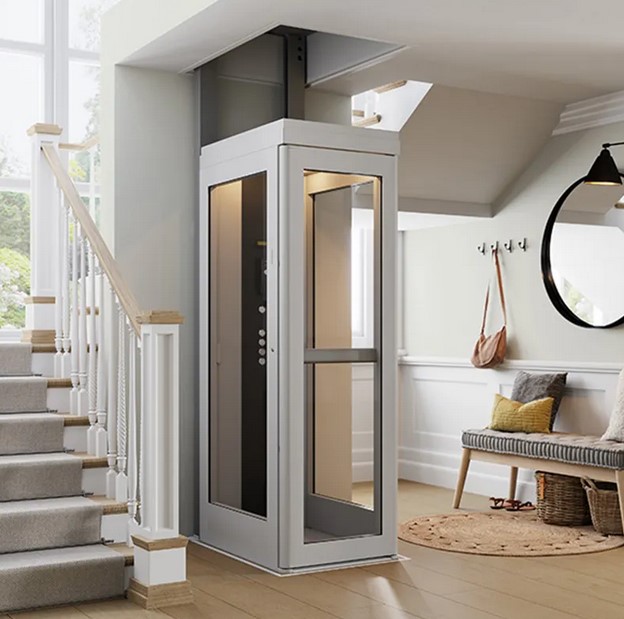We Maintain Lifts with Accuracy: Ensuring Security and Efficiency
We Maintain Lifts with Accuracy: Ensuring Security and Efficiency
Blog Article
Diving Into the Globe of Lifts: Typical Concerns Dealt With by Different Lift Mechanisms
As we navigate with the vertical transportation systems of modern-day buildings, elevators stand apart as an important part of our day-to-days live. However, behind their smooth procedure exists a world of intricate mechanisms that can in some cases experience difficulties. From hydraulic elevators to grip systems and machine-room-less designs, each lift type includes its collection of usual concerns. Understanding these obstacles is essential for making sure the smooth functioning of these important systems. Allow's explore the complexities that underlie the operation of lifts and the possible issues that can emerge, clarifying the complex internet of lift systems.
Hydraulic Elevators
Hydraulic lifts, typically favored for low-rise structures, utilize fluid stress to control the activity of the lift vehicle (lift repair companies). This mechanism involves a hydraulic pump pressing oil into a cylinder, triggering the elevator to move in the desired direction. While hydraulic lifts are recognized for their smooth and peaceful procedure, they do include their own set of common issues
One prevalent trouble with hydraulic lifts is oil leakage. Additionally, issues with the control system, such as faulty shutoffs or a malfunctioning pump, can cause disruptions in the lift's movement.
Normal maintenance and punctual repair work are vital to guarantee the smooth functioning of hydraulic lifts. By addressing these typical problems proactively, building proprietors can minimize downtime and make certain the safety and performance of their vertical transport system.
Traction Lifts
When thinking about upright transportation systems in structures, one more typical kind other than hydraulic lifts is the grip lift. Traction elevators operate utilizing a system of ropes and weights that relocate the lift vehicle by gripping onto the hoist ropes. This system permits smoother and quicker vertical transport contrasted to hydraulic systems.
One of the usual issues encountered by traction elevators is rope wear. The continuous motion of the ropes within the grip system can cause deterioration gradually, possibly causing the lift to malfunction or become harmful for usage. Regular evaluations and upkeep of the ropes are necessary to guarantee the elevator's correct performance and security.
One more problem that grip lifts may experience is associated with the control system. Problems with the control system can bring about concerns such as irregular motion, delays in reaction times, and even full shutdowns. Regular screening and upkeep of the control system are critical to stop such issues and make certain the elevator's integrity.
Machine-Room-Less (MRL) Elevators

One of the essential components of MRL elevators is the portable gearless grip maker that is installed within the hoistway. This device successfully drives the elevator cars and truck without the demand for cumbersome devices found in traditional traction lifts. In addition, MRL elevators typically use a weight system lift companies in London to balance the automobile, additional enhancing their power effectiveness.
In spite of their advantages, MRL lifts may deal with challenges associated to upkeep and repair as a result of the constrained space for devices setup. Access for servicing components within the shaft can be restricted, requiring specialized training for specialists. Appropriate upkeep schedules and regular inspections are crucial to make sure the continued smooth operation of MRL lifts.
Overloading and Weight Limitation Issues
Are lifts outfitted to deal with excess weight lots successfully and securely? Overloading and weight limit concerns are important issues in lift operations. Lift manufacturers layout raises with details weight abilities to make sure guest safety and security and devices durability. Exceeding these weight restrictions can lead to various troubles, consisting of mechanical failures, delays, and security threats.
When elevators are strained, it places too much stress on the motor, cable televisions, and various other elements, potentially causing malfunctions or breakdowns. If they identify excess weight, safety mechanisms such as sensors and overload sensing units are in place to prevent lifts from moving. Furthermore, going beyond weight restrictions can lead to boosted energy intake and damage on the lift system.
To reduce straining concerns, building supervisors ought to plainly show weight restrictions in lifts and enlighten occupants on the value of sticking to these constraints - lift repair companies. Routine maintenance checks by certified professionals can likewise assist make certain that lifts are running within risk-free weight parameters. By addressing overloading and weight limit concerns proactively, structure owners can enhance lift security and efficiency
Electrical System Failings
Surpassing weight limitations in lifts can not only result in mechanical problems yet additionally possibly contribute to electric system failures within the lift facilities. Electrical system failings are an essential issue in elevator operation, as they can trigger unforeseen closures, breakdowns, or perhaps safety and security dangers. One usual electrical issue is the overheating of components as a result of extreme current circulation brought on by straining the lift repair near me lift past its capability. This can cause damage to the electrical wiring, control, or electric motor systems, resulting in costly fixings and downtime.
Routine upkeep and assessments are vital to determine and address prospective electric issues immediately, ensuring the secure and effective procedure of lift systems. By sticking to weight restrictions and performing routine electric system checks, structure proprietors can reduce the danger of electric failings in lifts.
Final Thought

Hydraulic lifts, typically chosen for low-rise buildings, use fluid stress to regulate the activity of the elevator auto.When considering vertical transportation systems in buildings, an additional usual type apart from hydraulic lifts is the traction lift. Grip lifts run using a system of ropes and counterweights that move the lift vehicle by grasping onto the hoist ropes. Unlike standard lifts that call for a different device room to house the devices, MRL elevators incorporate most of the components within the shaft, removing the demand for a dedicated maker space.In verdict, lifts face typical issues such as hydraulic breakdowns, grip system failings, and electrical system issues.
Report this page